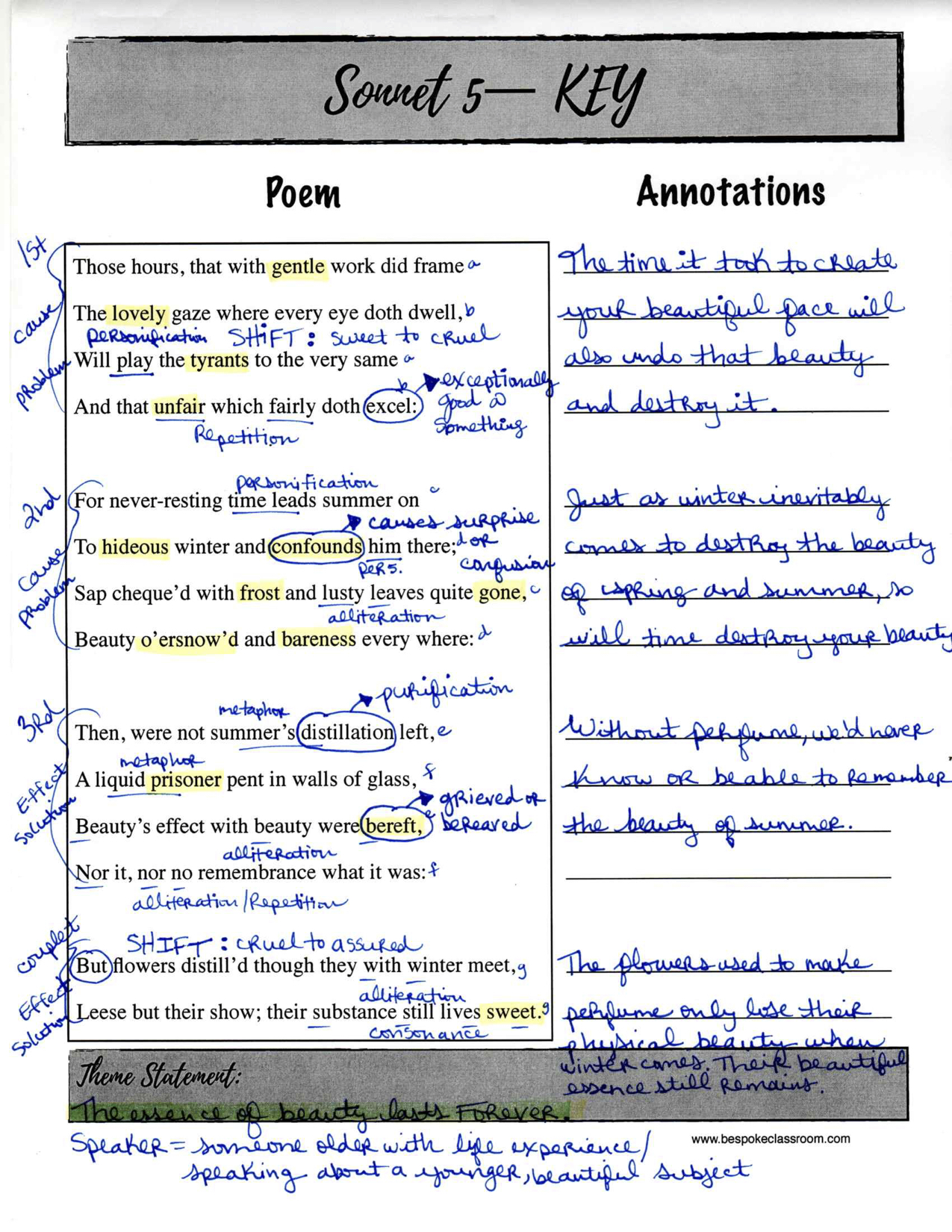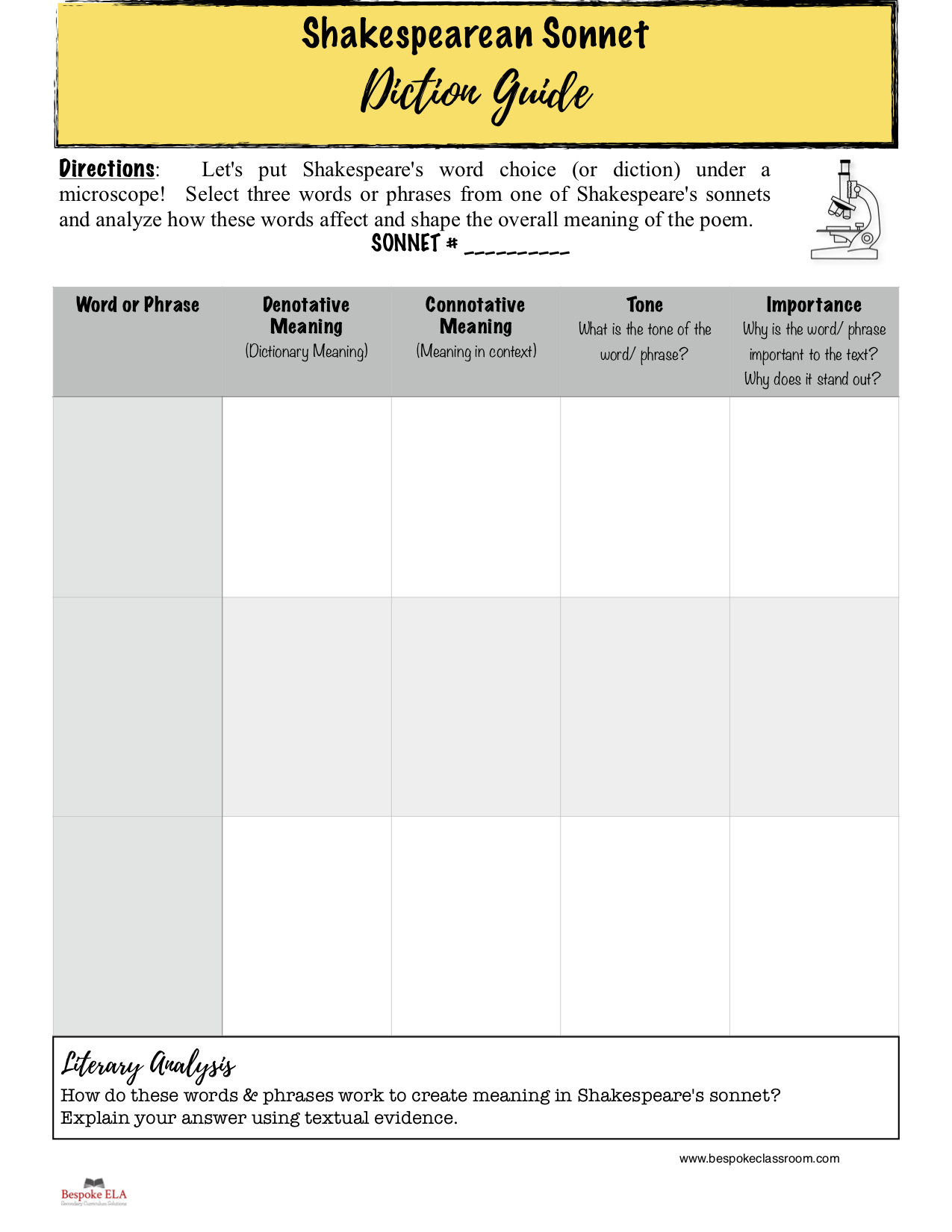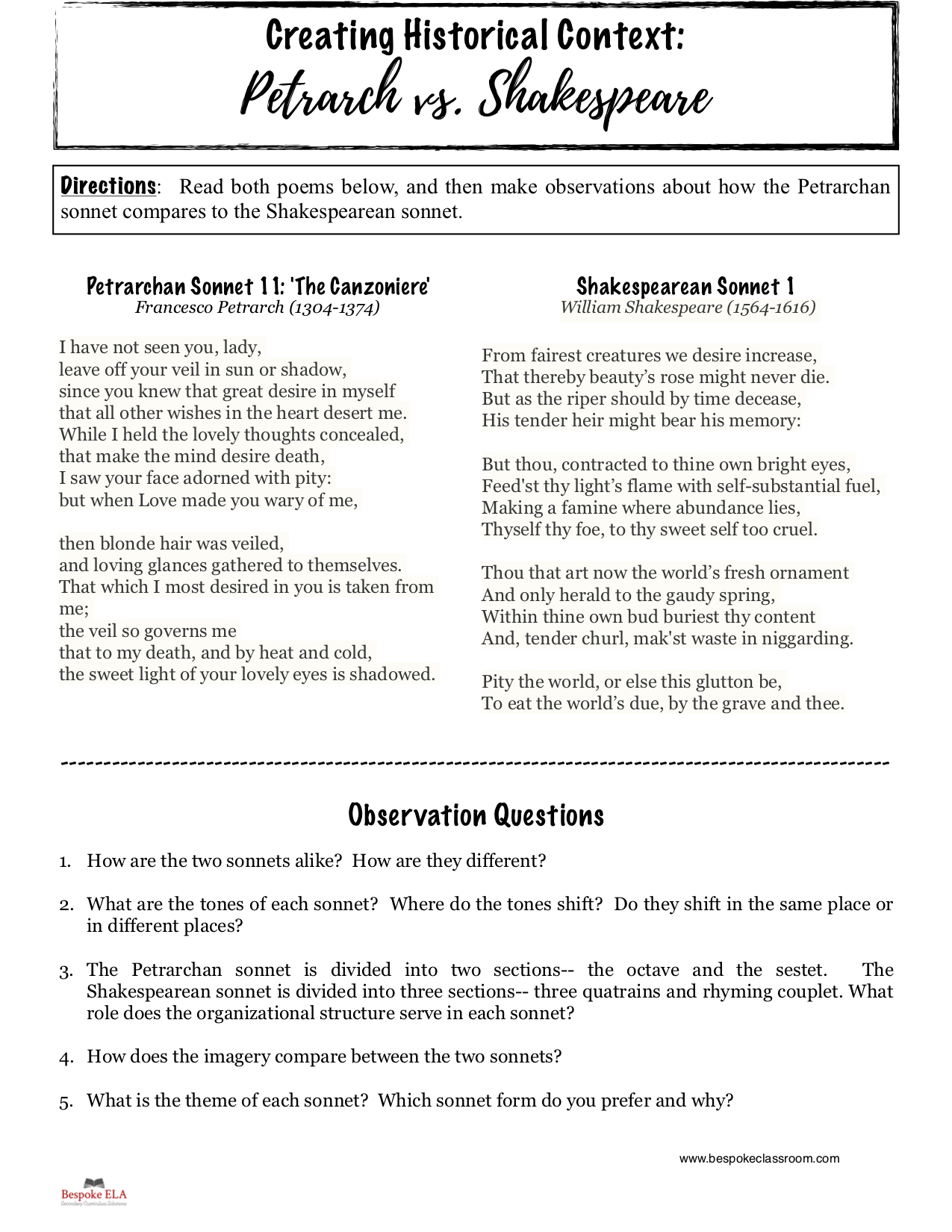I love to teach Shakespearean sonnets because I find that they are very accessible for students, and I always like the idea of using short pieces to target specific skills. With Shakespeare’s sonnets, I like to target how the theme is communicated through the structure of the poem as well as literary devices— among other approaches. I have created an ultimate Shakespeare Sonnet Bundle with answer keys to showcase how to annotate a sonnet. But there are more specific approaches that will help students intuit the diverse themes of Shakespeare’s collection of sonnets.
Here are five approaches for teaching Shakespearean sonnets in secondary ELA! I will use Shakespeare’s “Sonnet 18,” one of his most famous sonnets, to illustrate the five approaches.
Structure
It goes without saying that sonnet structure serves as the organizational structure for the thematic messages. Some sonnets are formatted in a problem/solution format while others are organized in a question/ answer format. Still others, such as “Sonnet 18,” begin with a comparison that leads to a conclusion in the rhyming couplet at the end.
Assignment: Have students label the three quatrains and the rhyming couplet of the sonnet. Then, have students analyze each part to identify the structure of the sonnet’s message and how the structure communicates the sonnet’s overall message.
Allusions
Shakespeare is known for using allusions to add depth to his writing as well as to illustrate literary elements such as characterization. In “Sonnet 18,” Shakespeare alludes to The Bible in line 11 when the speaker refers to the 23rd Psalm with reference to Death’s “shade.” Psalm 23 reads: “Even though I walk through the valley of the shadow of death, I will fear no evil, for you are with me: your rod and your staff, they comfort me.” The connection between Death’s “shade” and the “valley of the shadow of death” reminds the reader in both texts that our days are limited and that life is finite. The allusion serves as a means of emphasizing a key thematic idea of “Sonnet 18,” adding another thematic dimension to the sonnet.
Assignment: Students can research the allusions within a Shakespearean sonnet and then analyze how the allusions emphasize thematic ideas within the sonnet.
Imagery
When it comes to Shakespeare’s writing, imagery is KEY! He was a master of language and of painting a picture with words. Shakespeare communicates the tone of his work through the choice of images used to describe the situation. For example in “Sonnet 18,” Shakespeare uses the images: “Sometime too hot the eye of heaven shines, / And often is his gold complexion dimm’d, / And every faire from faire some-time declines […]” . These images convey a harsh, downtrodden tone due to the decline of beauty as depicted by the dimming sun. These images work to relay the message that beauty does not last forever.
Assignment: Students can circle images in a sonnet and then label the tone and tone shift of the sonnet to determine how tone affects the overall theme.
Memorization
While poetry recitation may seem a thing of the past, there are still many reasons why it still matters and makes a difference in comprehending a poem’s meaning. For one, practicing the poem’s pacing, syntactical structure, and language yields a whole new level of understanding. When a student memorizes a poem by heart and practices recitation, they begin to make recitation decisions based upon the poem’s meaning. These guiding decisions are what yield a deeper understanding of the work— beyond that of merely reading silently and highlighting/annotating on the page. Taking it off the page brings it to life. The person presenting the poem interprets the poem in his/her recitation, which can also affect how other’s view the poem as well.
Assignment: Students should select one of Shakespeare’s sonnets to commit to memory and practice reciting it to the class. After students memorize the words, they should then make decisions about pacing, syntax, and language to interpret the feelings and tones of the sonnet.
Connections
For this approach, I find it helpful with Shakespeare’s sonnets to focus on text-to-text connections because the sonnets contain sections that carry similar themes and messages. Making connections across sonnets can help students to understand the meaning of a group of sonnets rather than just one sonnet in isolation. For example, Shakespeare has several sonnets on the topic of beauty, and students can easily make a text-to-text connection between “Sonnet 18” and another one such as “Sonnet 54.” “Sonnet 54” echoes the similar loss of beauty concept from “Sonnet 18” as shown with the following lines:
The canker-blooms have full as deep a dye
As the perfumed tincture of the roses,
Hang on such thorns and play as wantonly
When summer's breath their masked buds discloses:
But, for their virtue only is their show,
They live unwoo'd and unrespected fade,
Die to themselves. Sweet roses do not so;
Of their sweet deaths are sweetest odours made:
And so of you, beauteous and lovely youth,
When that shall fade, my verse distills your truth.
Not only do these two sonnets share a common connection through the concept of beauty, but they also share a similar thematic message about how art (such as poetry) can grant immortality to beauty. So, making connections across sonnets is an approach that helps to reinforce theme for students during poetry analysis.
Assignment: Students should make connections between sonnets to look for similarities and then discuss how these similarities help to elucidate the thematic meanings behind Shakespeare’s works.
How else do you approach studying Shakespeare’s sonnets with your classes, and which sonnets are your favorite to teach? Leave us a comment below. We’d love to hear from you!
Related Resource
About the Author
Meredith is the founder and creator of TeachWriting.org and Bespoke ELA. She has taught high school English for 10+ years in Dallas, Chicago, and New York City and holds a M.A. in Literature from Northwestern University. She has always had a connection to the written word-- through songwriting, screenplay writing, and essay writing-- and she enjoys the process of teaching students how to express their ideas. Meredith enjoys life with her husband, daughter, and sweet pups.














